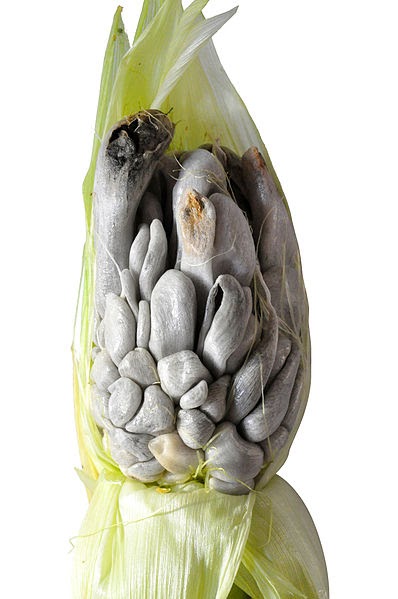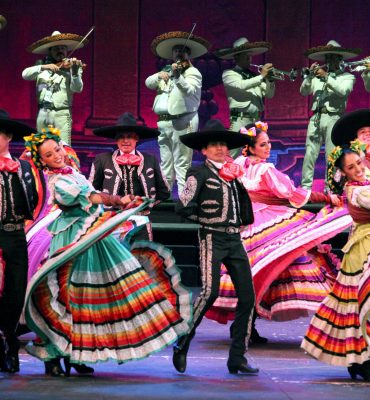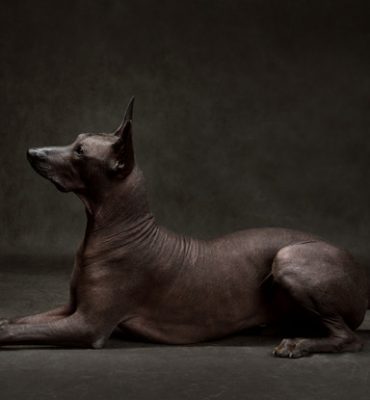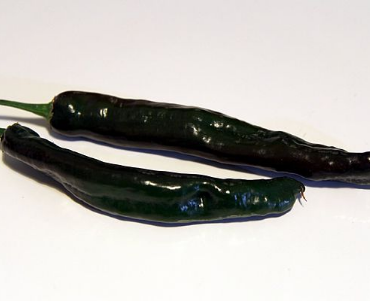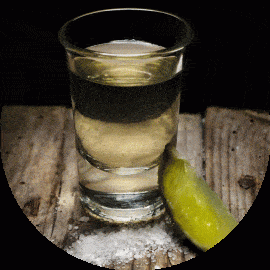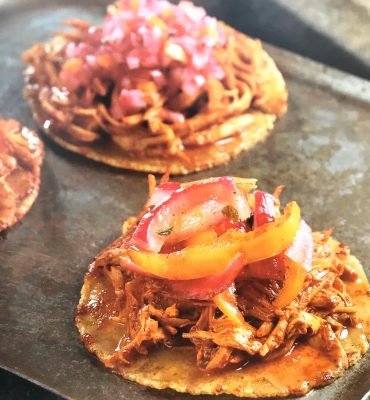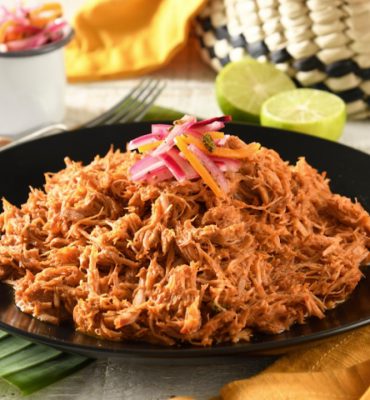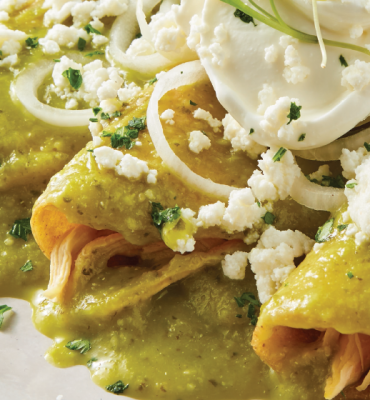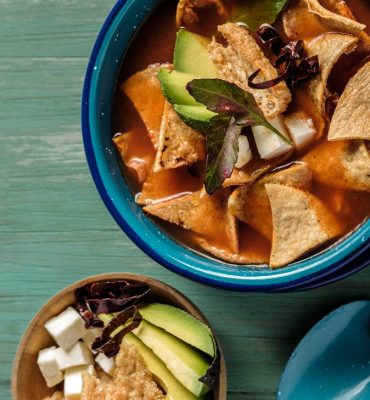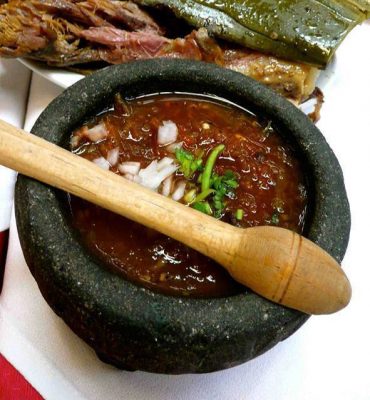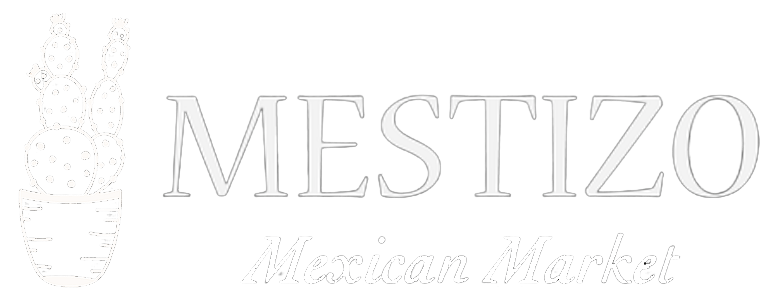Huitlacoche is a Latin American delicacy that grows on corn plants. Pronounced whee-tla-KOH-cheh, it can also be found under the aliases corn truffle, corn smut and Mexican truffle. So how can this corn fungus go from a farmer’s nightmare to a culinary delicacy? Let’s take a look at what huitlacoche is, where it comes from and, importantly, how to cook it!
What is huitlacoche?
[Image: File:Huitlacoche 1932.jpg – Wikimedia Commons]
Huitlacoche is a fungal disease caused by the fungus Ustilago maydis which affects certain variations of corn plants. It grows on the ears, surrounding and ultimately consuming the kernels, and looks similar to pebbles. The outside is a bluish grey, but the inside is very dark, almost black.
While it’s a fungal disease, in Mexico, huitlacoche is considered a delicacy and is used in a range of different recipes. It can be hard to reliably grow as it needs a lot of rain and only grows on organic corn. Many farmers earn extra money if they grow corn smut on their crop as it can sell for more than the corn it was grown on.
Outside Mexico, however, it’s usually not considered desirable and farmers will use fungicide to prevent it from growing, or will sometimes simply destroy infected plants. Farmers have developed strains of corn that have resilience to corn fungus.
Where does it come from?
Huitlacoche is mostly found in Mexico. The word is Nahuatl, a language used by the Aztecs and one that is still spoken in Central Mexico today. Huitlacoche’s origins can be traced back to this era – and is likely to have been enjoyed even earlier. Corn was a central part of the Aztec diet and growing it inevitably led to huitlacoche. Rather than waste this fungus, the Aztecs realised it made for a delicious ingredient in its own right!
It wasn’t just the Aztecs using huitlacoche; the Native American Hopi and Zuni tribes have also been using it for centuries in cooking, and for medicinal and ceremonial purposes. The Hopi tribe called it nanha, harvesting it when young and at its most tender. The Zuni tribe considered it to be a symbol of life.
Outside Mexico, you can buy corn truffle from specialist Mexican grocers such as Mestizo Market and it often comes canned or frozen. In Mexico, it can be found in most markets between May and November, when it’s in season, and in lots of grocery shops.
Is huitlacoche safe to eat?
Yes, huitlacoche is definitely safe to eat. It makes a delicious filling for a lot of different Mexican dishes such as tamales and quesadillas.
Nutritional benefits
The fungus causes metabolic changes in the corn plant, meaning that huitlacoche has very different nutritional properties to corn. It has a lot more protein and also contains an amino acid called lysine. Lysine is an essential amino acid, which means that our bodies can’t produce it and have to get it from our diet. We use it to make carnitine which is found in almost every cell of our bodies, so it’s an important ingredient!
What is huitlacoche like?
You might be hesitant to try huitlacoche without first hearing about what it’s like – after all, it has a very unique appearance!
Corn smut taste
Corn smut, or huitlacoche, is very similar to other varieties of mushroom. It has an earthy flavour, combined with the taste of corn. It means that while it’s similar to other mushrooms, it’s also very unique. This is one of the reasons it’s so prized in Mexico and Latin America.
Texture
Huitlacoche has a very soft and spongy texture. Because it’s so delicate, it doesn’t need chopping, but can be gently pulled apart.
If you are harvesting your own huitlacoche, it should be picked when it’s spongy and soft. If it becomes too firm, it loses its rich earthy flavour and becomes bitter.
Colour
An important thing to note is that although huitlacoche looks a greyish colour on the outside, when it is cooked and gets hot, it becomes black. Dishes that contain it usually have a dark hue. It can be strange and surprising when you use it for the first time, but don’t worry; it’s meant to do that!
How to cook huitlacoche
Huitlacoche is a kind of fungus. This means it can be used in place of mushrooms in most recipes and works very well.
You can use them whole or simply tear them apart with your fingers. Without any need to chop, they’re low effort and also a great way to get kids helping out with the cooking!
Sautée them in a pan and add some salt and spices. They’re then ready to eat as they are! They’re very commonly added into other dishes such as the fillings for quesadillas, tamales and other Mexican recipes. Simply drop them into your sauce, or alternatively, sautée them with onions and garlic and build your sauce up from there.
Huitlacoche goes with lots of different flavours, but is particularly delicious with cheese!
Huitlacoche Quesadillas Recipe
Quesadillas are a great way to use huitlacoche. Check out this recipe that can be customised to suit your tastes!
Ingredients
- 8 soft corn tortillas (you can use wheat)
- A can of corn truffle or huitlacoche
- Cheese – any will work, but we recommend oaxaca as it melts really nicely
- 2 cloves of garlic (sliced or crushed)
- ½ a white onion (diced)
- Dried epazote (Can’t get your hands on any? Swap it for coriander)
- Salt and pepper
- Vegetable oil for frying
Method
- Heat around a tablespoon of oil in a medium-sized pan
- Fry off your garlic and onion until the onion has softened
- Add the can of huitlacoche with salt, pepper and epazote to taste. Allow it to cook for around 5 minutes
- Fill one tortilla with the huitlacoche mixture and sprinkle generously with cheese. Fold in half and fry on each side until golden and the cheese has melted.
- Serve with your favourite sides such as guacamole or salsa.
Why not customise your huitlacoche quesadillas by adding some of your favourite ingredients? While making the filling, you could also add some sliced red peppers for a sweet crunch, some jalapenos if you like heat, or some black beans to enhance the rich flavour.
Ready to try huitlacoche? Shop corn truffle with Mestizo Market.

